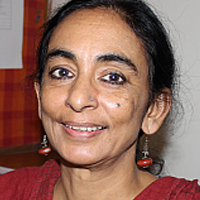The Right to Education Act focuses on inputs in the schooling process and teaching the prescribed curriculum, but has little to say about learning outcomes of children. This article argues that educational policy needs to be more in line with ground realities. Teachers need to be trained to teach classrooms with students that are diverse in terms of age and ability.
On 1 April 2010, the Right of Children to Free and Compulsory Education Act (RTE) became a law in India. The new law makes it the responsibility of the state to ensure that every child in the 6 to 14 year age group in India receives eight years of education. The spirit of RTE clearly intends ‘education’ to go beyond access and guarantee learning for all. However, what the law actually specifies are inputs that should be present in schools (in the form of buildings, facilities, teachers, etc.) rather than outcomes that children should be guaranteed (in the form of specific learning benchmarks). It thus makes a series of assumptions about how the inputs it mandates will translate into processes in schools and generate outcomes for children. These assumptions are based on how schools should, in theory, be organised and function rather than on the realities of children, classrooms and schools in India today.
Enrolment vs. attendance
First, RTE’s focus on ensuring that all children are in school translates into a directive that all children should be enrolled. In India, enrolment figures for the 6 to 14 age group have been in excess of 90% for many years now. But unlike in western countries, enrolment is a highly misleading indicator of children’s actual exposure to schooling. An examination of children’s attendance provides far more accurate information about children’s actual participation in school. Moreover, it can provide important insights into the areas on which educational policy should focus to ensure that all children learn.
Annual Status of Education Report (ASER)1 2012 data reveals that nationally, 71% of all children enrolled in primary schools (grade 1-5) were present in school on the day of the survey. Across states, this proportion varies substantially, from 94% in Kerala to 50% in Bihar. Data from a single day in the year provides a first estimate of the magnitude of the problem, but is insufficient to draw conclusions about attendance patterns among children. The Inside Primary School (IPS)2 study recorded the attendance of each child individually in a sample of 30,000 children on each of three visits to their schools over a period of 15 months. Among the grade 4 children sampled, only about half were found present in school on all three visits; attendance among grade 2 students was substantially poorer at about 40%.
Attempts to relate children’s enrolment status to their learning outcomes, thus, come with the problem of substantial variation in the actual exposure to school that enrolled children have received. With the goal of universal primary school enrolment very close to being met, translating enrolment into attendance and attendance into learning are the challenges that lie ahead.
Teaching the curriculum
Once in school, what is the content that children should be expected to learn? RTE has little to say about children’s learning outcomes; however it does require teachers to complete the curriculum of the grade they are teaching. Clearly, then, it is assumed that all children are at a level of mastery where they are able to keep up with the content prescribed for the grade in which they are enrolled, such that when teachers have finished the syllabus, presumably children have mastered its contents.
However, there is by now a substantial body of evidence about what children in each grade can and cannot do. ASER data for 2005 to 2012 shows that in every state in the country, children are several grade levels behind where the textbook expects them to be in terms of their ability to read. For example, in 2012, less than a third of students in grade 3 in government schools were able to read text at grade 1 level of difficulty, and barely 40% of students in grade 5 were able to read text at grade 2 level of difficulty. These proportions have worsened steadily over the 2009-2012 period. A comparison of data from IPS and ASER, show that despite differences in sampling and tools, results across these two data sources are broadly consistent.
Attendance and learning outcomes
In the context of poor attendance and poor learning outcomes, it is not clear whether children whose attendance is poor learn less, or whether children who are not learning attend school less often. For the IPS sample, we do not know whether children who were unable to read in 2009 had attended school less often over the preceding three years than children who could read. What the IPS data do show is that grade 4 children who were able to read grade 3 level text in 2009 attended school more often during the subsequent year than those who were not readers. A part of the sample of the IPS children was tracked in 2013. Of these children, about 7% had not transitioned to middle school. However, the dropout rate was twice as high among the non-readers as compared to the readers.
It may be that household characteristics drive both reading ability and attendance, such that children from more affluent homes and/or with more educated parents learn to read faster and attend school more regularly. But it is likely that even limited success in school encourages children to attend more often, whereas the experience of being completely unable to follow the textbook acts as a discouragement, eventually leading to the child dropping out.
Diversity in classrooms
The teaching-learning process is further complicated by the diverse composition of classrooms. The elementary education system and RTE both assume that children enter school at a certain age and advance a year at a time through the system, such that children enter grade 1 at age five or six and complete eight years of schooling at age 13 or 14. The RTE Act reflects this assumption when it specifies that the state shall provide children who are currently out of school with special remedial assistance to enable them to enrol in the grade appropriate to their age.
In practice, children in India do not necessarily begin grade 1 at the appropriate age, nor do they progress neatly up the ladder one year at a time. At the all India level, the age variation in each class is substantial. ASER data shows that large proportions of children currently in school are overage even in grade 1. In 2012, only half of all children enrolled in grade 4 in government schools were eight or nine years old.
This situation has major implications for both students and teachers. Anyone who has spent time in government schools in rural India can attest to the sight of a group of children who are clearly physically much bigger than their peers, sitting right at the back of the classroom, participating very little in class activities and typically being ignored by their teachers. The effects of this situation on these children’s self-esteem and aspirations can only be guessed at, but what the IPS datasets do show is a clear relationship between children’s age and their attendance in school. Among the grade 4 sample, overage children attended school far less often than others – only a fourth of the overage children were present on all three visits as compared to three-fourth of the remaining children.
From the point of view of teachers, teaching a group of children who are relatively homogenous requires less skill than teaching a group that is quite varied. However, the reality is that there is considerable diversity in the classroom – both in terms of age as well as ability. To complicate the classroom situation further, both ASER and IPS data demonstrate that the majority of primary school classrooms in rural India are multi-grade, with two or more grades grouped together with a single teacher. In ASER 2012, across rural India, more than half of all grade 4 classrooms were multi-grade. Even with just two grades grouped together, teachers are routinely required to teach in situations where there could easily be a gap of four to five years in both age and learning levels between students in a single group.
Implications for policy
Most teacher training programmes in India assume that teachers will engage with groups of students who are largely homogenous in terms of age and ability. Given that teachers do not have the skills to deal with multi-grade, multi-level groups, how does this situation affect children’s learning? The IPS data suggests that even in the context of extremely low learning achievement overall, overage children do substantially worse than others. For example, in the IPS baseline assessment of grade 4 children, there is a ten percentage point difference between children who were overage and other children in terms of their ability to read a grade 3 level text. Yet education policy in India continues to be based on the assumption that children in school are in the grade appropriate to their age, and that remedial help is needed only to enable the small proportion of children still out of school to enrol in school in the appropriate grade. With such wide age variation in every grade, however, remedial programmes need to be instituted not for exceptional cases but for the majority of children in school today.
The RTE Act is now more than three years old. The dream is that RTE will enable every child in India to go to school regularly, learn well consistently, and complete at least eight years of schooling successfully. The objective is achievable – but only if education policies are based on ground realities.
Notes:
-
Annual Status of Education Report (ASER) is a national survey that annually assesses basic reading and arithmetic skills of about 600,000 children in the 5 to16 year age group across all rural districts of India. ASER 2005-2012 is available at www.asercentre.org
-
Inside Primary Schools (IPS) is a longitudinal study conducted by ASER Centre of close to 30,000 grade 2 and grade 4 students who were randomly sampled from 900 government primary schools located in 5 major Indian states (Andhra Pradesh, Assam, Himachal Pradesh, Jharkhand and Rajasthan). This study tracked sampled students over the course of about fifteen months (2009-2010); Available at www.asercentre.org




 18 October, 2013
18 October, 2013 





Comments will be held for moderation. Your contact information will not be made public.